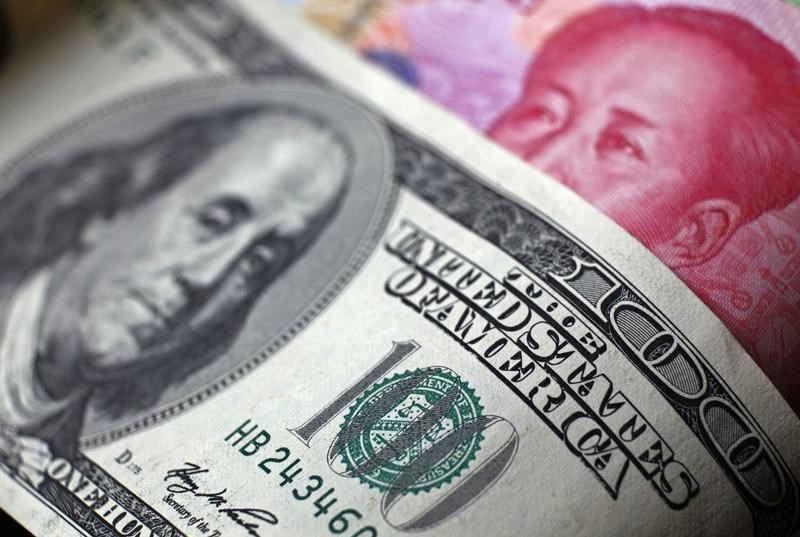Investing.com - The Chinese offshore yuan lost its initial impetus and traded little changed against the U.S. dollar on Tuesday as China’s central bank supplied liquidity, dampening a rebound from 2019 lows.
The yuan has been under pressure as escalating tariffs between Washington and Beijing heightened fears of economic damage to the world’s second-largest economy.
Remarks from U.S. President Donald Trump that he would meet with his Chinese counterpart Xi Jinping at the G20 meeting on June 28 and 29 and that he believed trade talks would be “very successful” breathed new life into the yuan, allowing a recovery from this year’s low.
But China’s central bank stepped in on Tuesday with an injection of 200 billion yuan (approximately $29 billion), pulling USD/CNY back up to the unchanged mark, its highest level since the end of December.
Trump noted the move in a tweet, saying that “China will be pumping money into their system and probably reducing interest rates”, while urging the Federal Reserve to do the same.
Investors paid little attention the American president’s call for lower rates and the U.S. dollar index remained higher as they rotated out of safe-haven currencies such as the Japanese yen or Swiss franc. USD/JPY and USD/CHF were both around 0.3% higher by 11:00 AM (15:00 GMT).
The greenback also received a lift from weakness in sterling and the euro after disappointing economic data. U.K. wage inflation cooled more than expected in March while German economic confidence registered an unexpected decline, placing pressure on the single currency.
